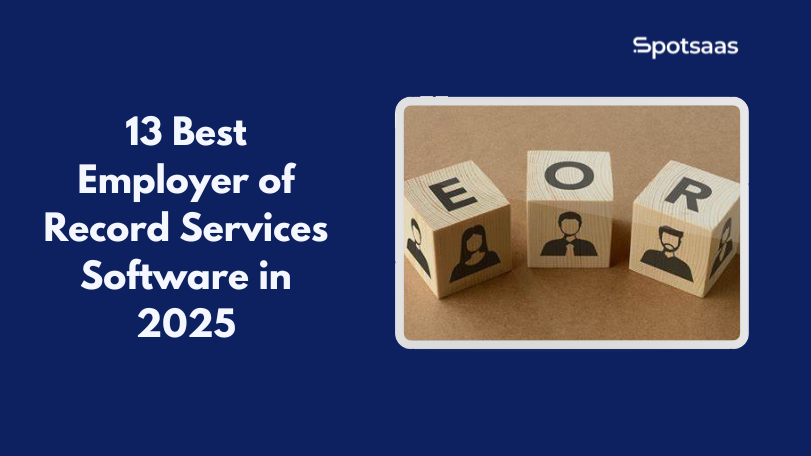As AI-generated content grows, so does the need for reliable AI content detection tools. AI content detectors help identify, analyze, and differentiate between AI-generated and human-created text. These tools are useful across sectors, helping ensure content originality, safeguard intellectual property, and detect misinformation.
This guide will cover everything needed to choose the best AI content detector software, including core features, intended users, challenges, benefits, alternatives, purchasing guidance, setup advice, and the latest trends in AI content detection.
What Is AI Content Detector?
AI content detector software identifies and flags AI-generated text, often through machine learning (ML) and natural language processing (NLP). These tools assess syntax, structure, and content patterns to spot machine-written versus human-written text.
AI content detection can prevent plagiarism, ensure content integrity, and verify information, making it especially valuable for publishing, academic institutions, and social media.
Some common uses for AI content detectors include:
• Plagiarism Detection: Detects AI-generated content that mimics human writing, helping maintain originality.
• Academic Integrity: Ensures student work is original, helping educators uphold academic standards.
• Brand Protection: Helps businesses confirm the authenticity of content shared on their platforms.
• Misinformation Prevention: Filters AI-generated news and articles to reduce the spread of false information.
• Content Moderation: Helps identify automated or generated content to enhance trustworthiness.
Common Features of AI Content Detectors
Here’s a look at some of the most essential features:
| Feature | Description |
|---|---|
| Real-Time Detection | Identifies AI-generated content as it’s created, providing instant feedback. |
| Customizable Detection Settings | Adjusts sensitivity levels for different contexts, useful in academic or publishing settings. |
| Multi-Language Support | Detects AI content across various languages, beneficial for global organizations. |
| Detailed Reports | Provides insights on flagged content, including confidence scores and reasons for detection. |
| API Integrations | Integrates with CMS, LMS, or other platforms to ensure seamless detection. |
| Historical Content Analysis | Analyzes archived content for AI generation, especially useful for audits. |
Who Uses AI Content Detectors?
AI content detector tools are widely adopted across sectors where content authenticity and trustworthiness are crucial.
| User | Uses |
|---|---|
| Educational Institutions | Verifies the originality of student submissions. |
| Publishing Platforms | Ensures content is human-authored, maintaining integrity. |
| Content Creators | Avoids unintentional use of AI content for personal brand trust. |
| Corporate Teams | Safeguards brand messaging authenticity across digital channels. |
| Social Media Platforms | Filters out AI-generated misinformation. |
Benefits of AI Content Detectors
AI content detectors provide several important advantages that make them valuable in many areas:
Enhance Content Authenticity
AI detectors help ensure content is truly original by identifying whether text is human-written or machine-generated. This process helps build trust, as readers or users can be confident in the authenticity of what they’re reading. This is especially useful in fields like publishing, academia, and social media, where genuine content is essential for credibility.
Ensure Compliance
Many institutions and businesses have strict guidelines on originality. AI content detectors support these rules by checking that submitted work, like academic papers or articles, hasn’t been generated by AI or copied. This helps schools, businesses, and media outlets maintain their standards and avoid potential issues with unoriginal content.
Improve Brand Trust
For companies, maintaining a trustworthy brand image is crucial. AI detectors can filter out automated or fake content that could harm a brand’s reputation or mislead audiences.
Time and Cost Efficiency
Detecting AI-generated content manually can be time-consuming and costly. AI detectors speed up the process by quickly scanning and flagging content that might need review. This reduces the need for manual checks, saving both time and money, which is particularly helpful for large organizations that review high volumes of content regularly.
Challenges of AI Content Detectors
While AI content detectors are highly beneficial, they come with some challenges:
Accuracy
Detecting AI-generated content accurately is challenging, as some AI text closely resembles human writing. This can result in false positives (flagging real text as AI) or false negatives (missing AI content).
Adaptability
With rapid advances in AI, detectors must constantly update to recognize new patterns. Outdated tools may fail to identify content from newer AI models.
Privacy & Security
Detectors handle sensitive data, needing strict compliance with privacy laws (like GDPR). Without secure handling, they risk data breaches and legal issues.
Integration
Many detectors struggle to integrate smoothly with existing systems (e.g., CMS, LMS). This can create compatibility issues, slowing workflows and requiring extra setup.
AI Content Detectors Pricing
The pricing for AI content detectors can vary widely based on features, the scale of use, and the level of accuracy provided. Here are some of the primary factors that impact pricing and common pricing models to help you understand what to expect when budgeting for AI content detection software:
Pricing Models
• Subscription-Based: This is the most common model, where users pay a monthly or annual fee based on the package. Subscription costs often depend on the number of words, documents, or pages that can be processed monthly.
• Pay-Per-Use: Some tools offer a pay-per-use model, where users are charged based on the actual number of words or documents scanned.
• Enterprise Plans: Custom pricing for large organizations may be available, typically with volume discounts and tailored features.
• One-Time Purchase: For organizations that prefer owning software rather than subscribing, some vendors provide a one-time purchase or annual licensing fee.
Additional Costs
• Setup and Training Fees: For more complex setups, some vendors may charge for initial implementation and training. This cost covers onboarding, helping teams learn the software quickly.
• Technical Support and Maintenance: Some vendors offer ongoing support and maintenance for an additional fee, which can include updates, troubleshooting, and adjustments as the AI model evolves.
• Customization Fees: If an organization needs custom features, like specific integration capabilities or unique detection settings, vendors may charge extra for these customizations.
Alternatives to AI Content Detectors
Although AI content detectors offer effective solutions, some alternatives can also help with content verification:
Human Review
In many cases, a person’s judgment is still one of the best tools for verifying content. Humans can understand tone, context, and subtle cues that AI may overlook, making them highly effective for checking important content.
Traditional Plagiarism Checkers
Traditional plagiarism checkers can help catch repeated or copied phrases from existing sources. While they aren’t as advanced as AI content detectors, they are helpful for identifying parts of content that may not be original. However, these tools may miss newer AI-generated text patterns, so they’re best suited for simpler verification needs.
Hybrid Models
Combining human review with traditional plagiarism tools offers a balanced approach. The software can quickly identify possible issues, and human reviewers can verify and add insight. This mix allows for thorough content checks without relying solely on AI detection, adding a layer of accuracy by combining machine speed with human judgment.
How to Choose the Right AI Content Detector
1. Define Your Content Verification Needs
Identify whether you need a tool for detecting plagiarism, verifying academic submissions, or ensuring brand authenticity. Clarify your requirements to find a solution that aligns with your needs.
2. Look for Key Features
Review features like real-time detection, customizable settings, and report generation. Ensure the software includes tools that support your goals effectively.
3. Test the Software
Request trials or demos. Use these to assess accuracy, user-friendliness, and integration with existing systems. Get feedback from relevant team members on its usability.
4. Ensure Compliance with Data Regulations
Confirm that the tool adheres to data privacy standards (such as GDPR). Data security is crucial, especially in education or corporate sectors where content authenticity matters.
5. Evaluate Scalability
The software should be able to accommodate your growth, supporting increasing amounts of content detection as your organization expands.
6. Check for Support and Training Options
Reliable customer support and training help maximize the software’s potential. Look for vendors who offer resources and dedicated assistance.
Latest Trends in AI Content Detection
AI content detection is continually advancing. Here are some trends shaping the future of this software:
Adaptive Learning Models
New detectors are using advanced AI that adapts over time to improve accuracy. This means they learn from the content they analyze, helping them recognize subtle patterns in language and better detect AI-generated text.
Cross-Language Detection
More detectors now support multiple languages, expanding their usefulness in global organizations. By recognizing AI-generated content in different languages, these tools help companies, schools, and media platforms monitor content for originality worldwide.
Enhanced Reporting Tools
Improved reporting features now provide detailed insights into flagged content, showing why text was flagged and the confidence level of each detection. This helps users understand the results better and provides data for adjusting detection settings based on specific needs.
AI in Real-Time Social Media Monitoring
AI detectors are increasingly used to monitor social media content in real-time, filtering out AI-generated posts that may spread false information.
Conclusion
Choosing the right AI content detector starts with identifying the challenges you need to address, whether it’s ensuring academic integrity or maintaining brand trust. Look for tools with features that align with your objectives, test the software to verify its accuracy, and confirm it meets data compliance standards.
By selecting a suitable solution, you’ll be well-equipped to maintain content integrity, reduce risks, and enhance trust within your organization or platform.



